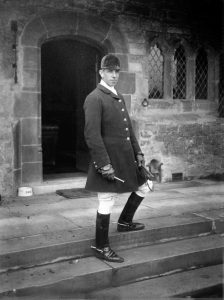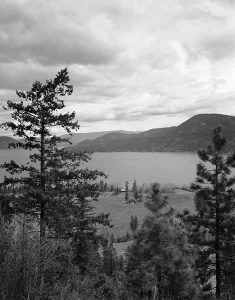James Cameron Dun‑Waters Arrives at Fintry
Enjoy the video, James Cameron Dun-Waters Arrives at Fintry, with a transcript
One of Scotland’s more valuable exports might be described in today’s terms as “human resources”. The Scots migrated across the world and are credited with the launch of countless enterprises in almost every field.
The Scottish Highland Clearances in the eighteenth and nineteenth centuries caused massive hardship. Entire communities were faced with either starvation or emigration. Many others emigrated of their own free will, carrying a wealth of tradition and expertise. James Dun-Waters was one of the latter.
James Waters was born November 28th, 1865 in Torquay, Devon, England but was raised at the family estate of Fintry, Scotland. In his youth he developed a love for the outdoors. His passion for hunting and fishing would stay with him for the rest of his life. At age 21, he unexpectedly inherited his great-uncle James Dunn’s shares in the Glasgow Herald Newspaper after his eldest brother, Alexander Waters, died. In recognition of his uncle’s fortune he added “Dun” to his surname, dropping one “n”, to keep his uncle’s family name alive.
School and university life provided James with more than an education. Friendships and associations were formed that lasted a lifetime. While at Cambridge, James met Albert, Earl Grey whose subsequent career included a term as Governor-General of Canada. It was an invitation from Earl Grey that brought James Dun-Waters to Canada. The experience of British Columbia was irresistible to someone with his interests.
In 1909, when James saw and explored Shorts Point on Okanagan Lake, he knew he’d found his dream. Within a year, he bought the delta and renamed it Fintry after his home in Scotland. He could see that farming the delta and investing in Canadian enterprises would support the outdoor life of hunting and exploring.
His wife Alice was equally enthusiastic about the new world opening before them, and they quickly wound up business affairs and said goodbye to friends and family in Britain.
The Dun‑Waterses built a manor house on the delta. James contracted friend and architect John J. Honeyman to design the house and Kelowna stonemason John Abbot Bailey to construct the house. The house was completed in 1911, using granite quarried from the nearby cliffs for the foundation, exterior walls and massive fireplaces. The house had spacious living quarters with four bedrooms, three bathrooms, a sitting room, living room, dining room and full basement, part of which was a secure cellar for the private stock of Dun‑Waters’s “Laird of Fintry” whiskey.




